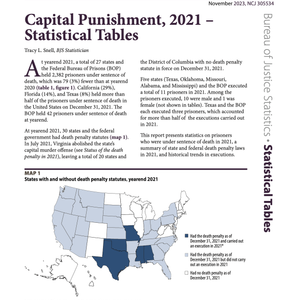
“At a time when faith in society’s institutions is at an all-time low, the failure of the capital-punishment system could be Exhibit A,” concludes the annual Capital Crimes Report issued by by Ohio Attorney General Dave Yost. The Report highlights numerous problems with its “broken” capital punishment system, including the “enormously expensive” cost.
The Ohio Legislative Service Commission has estimated that the cost of capital cases range from $1 to $3 million per case based on a collection of quantitative and qualitative studies in other states. “If these estimates apply to Ohio, then the extra cost of imposing the death penalty 121 times on the 119 people currently on Death Row might range from $121 million to $363 million,” notes the Report. “[I]t’s a stunning amount of money to spend on a program that doesn’t achieve its purpose.”
Of the 341 death sentences imposed on 336 prisoners from the state’s enactment of the death penalty in 1981 through the end of 2023, only one of every six sentences, or 56 executions, have been carried out. The Report notes that “87 death sentences have been removed by judicial action resulting in resentencing or release.” Twenty-one prisoners have had their sentences commuted. Forty prisoners have died of natural causes or suicide, which the Report notes are more likely causes of death than execution. Nine prisoners with intellectual disabilities were removed from death row after the Supreme Court held that executing people with intellectual disabilities was unconstitutional in Atkins v. Virginia (2002). Under Ohio’s 2021 law barring the death penalty for individuals with severe mental illness – only one of two states with such legislation – six people have been removed from death row and another 35 petitions are currently pending review.
As of December 31, 2023, 119 people with 121 death sentences remain on Ohio’s death row, nine fewer people than 2022. As of April 1, 2024, prisoners spent an average of 7805 days or 21 years on Ohio’s death row – a number that has consistently increased with each year. Prisoners are an average of 55.5 years old today and were an average of 34 years old at their time of sentencing (figures used the most current resentencing). Due to difficulty obtaining lethal injection drugs, the state has not carried out executions since 2018, at which time the average time spent on death row was 6,280 days or 17.19 years. Currently, there is a bill in the state legislature proposing the authorization of nitrogen gas in executions, described by AG Yost as a way to “kickstart” executions. The report identifies eight cases in which an execution date could be filed.
Sources
Time on Death Row
Nov 22, 2023




